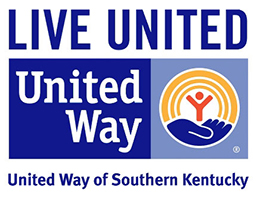Education » Prevention-Based Programs
Green Dot
Green Dot is a proven primary prevention strategy that focuses on all the members of a community as potential bystanders. Through education and skills practice, participants will change social norms that support power-based personal violence and empower participants to intervene with peers to prevent violence from occurring. Green Dot is a research-based program shown to decrease perpetration of violence by 17%-21% in Kentucky high schools by the use of bystander intervention. The research study was conducted over 5 years between the University of Kentucky and 26 high schools with the help of Kentucky’s rape crisis centers. In Warren County, Green Dot is implemented in two high schools and in the community. Green Dot consists of training faculty, staff, students, and community members on how all of us can do Green Dots regardless of our obstacles to make our community safer. The trainings discuss what is power-based personal violence (dating violence, sexual violence stalking, and bullying), and how we as bystanders are able to prevent it. The trainees are equipped with the knowledge and skills to safely and necessarily intervene around violence.
Now, imagine a map of Warren County and red dots represent power-based personal violence (dating violence, sexual violence, bullying, and stalking). A red dot is the choice, action, words, or behavior that tolerates or contributes to violence in any way. A red dot is the tiny moment is takes to hit your partner. A red dot is the tiny moment it takes to threaten someone or force someone to have sex. We don’t know exactly how many red dots there are in the community, but we know there are enough to sustain a culture that supports violence.
The Problem?
- 1 in 3 girls and 1 in 6 boys will experience some type of sexual violence in their lifetime.
- 47.7% of Kentucky women and 19.6% of men reported having some type of sexual violence in their lifetime.
- 1 in 5 girls report being abused by a boyfriend in high school
The Solution?
Now, imagine that map of red dots has green dots popping up over them. Green dots are the choices, attitudes, behaviors, and words it takes to create an intolerance of violence and creates a safer community. A green dot is getting a friend out of a high risk situation. A green dot is telling that person what they are doing is not okay. A green dot is inviting Green Dot to come speak to your work, church group, club, etc. If no one does anything, nothing changes and those numbers stay the same. But if each of us does two or three green dots, we will start to see a safer community and lower the number of people being hurt by power based personal violence.
A Green Dot can be one of the Three D’s:
Direct: Confront a potential red dot situation to help prevent violence
- “Is everything okay?”
- “Rape jokes aren’t funny.”
- “Can I help?”
Distract: Create a distraction to help diffuse the situation
- Show a funny video on your phone
- Ask for directions
- Start talking loudly on your cell phone while acting like someone called you.
Delegate: Get someone else to help out
- Store Clerk
- Co-worker
- Teacher
- Whoever you feel comfortable with
Proactive Green Dots: Doing something before any red situation happens.
Examples:
- Putting up a Green Dot sticker in your window
- Wear Green Dot gear
- Talking about Green Dot to your family and friends
- Having Green Dot come speak to your organization, school, church, work, etc.
It's My Space
Our evidence-based middle school prevention curriculum, It’s My Space, is implemented by Hope Harbor prevention educators and designed to reduce the prevalence of dating violence and sexual harassment among young people. The goals of the program are:
- To help students define the meaning of boundaries and the role of boundaries in friendships and dating/romantic relationships.
- To help students identify violations of their own boundaries and the boundaries of others.
- To help students determine the key elements of a healthy relationship.
- To help school administrators identify spaces in the physical environment of the school where students feel unsafe and create strategies for making those areas safer.
The program has two parts: a classroom curriculum and a mapping component. The classroom curriculum is facilitated by prevention educators working out of the Kentucky Association of Sexual Assault Programs’ regional rape crisis centers and is available for 6th, 7th, and 8th graders. To implement the mapping component of the program, prevention educators have students anonymously designate areas in the school where they feel safe and unsafe. The results of the mapping exercise are tallied and analyzed by prevention educators and then presented to key staff and school stakeholders.
Back to Topics

